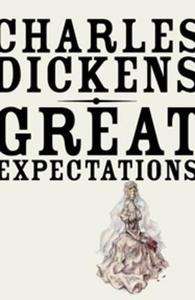Great Expectations

Editorial Vintage USA
Fecha de edición enero 2012
Idioma inglés
EAN 9780307947161
464 páginas
Libro
encuadernado en tapa blanda
Resumen del libro
One of Charles Dickens's most fascinating novels, Great Expectations follows the orphan Pip as he leaves behind a childhood of misery and poverty after an anonymous benefactor offers him a chance at the life of a gentleman.
From young Pip's first terrifying encounter with the convict Magwitch in the gloom of a graveyard to the splendidly morbid set pieces in Miss Havisham's mansion to the magnificently realized boat chase down the Thames, the novel is filled with the transcendent excitement that Dickens could so abundantly provide. Written in 1860 at the height of his maturity, it also reveals the novelist's bittersweet understanding of the extent to which our deepest moral dilemmas are born of our own obsessions and illusions.
Charles Dickens (1812-1870) was born in Portsmouth, England, and spent most of his life in London. When he was twelve, his father was sent to debtor's prison and he was forced to work in a boot polish factory, an experience that marked him for life. He became a passionate advocate of social reform and the most popular writer of the Victorian era.
Biografía del autor
Charles Dickens (Portsmuth, 1812 Gadshill, 1870) ha llegado hasta nosotros como el autor más importante e influyente de la literatura victoriana. Sus obras y su peripecia personal, íntimamente relacionadas, plasmaron no sólo el pulso social de su época, también el terrible estado moral de una sociedad atrapada en la desigualdad y las convenciones. Dickens experimentó la miseria, el éxito popular, la cárcel, el hambre... sólo logró cumplir con el más íntimo de sus anhelos, la libertad, entregándose a la literatura. Aunque muchas de sus obras gozaron de un extraordinario favor popular, baste decir que muchas de ellas fueron publicadas por entregas, en formato folletín; serían las críticas entusiastas de George Gissing y G. K. Chesterton las que encumbrarían a Dickens como el autor más importante de la literatura inglesa del siglo XIX.








